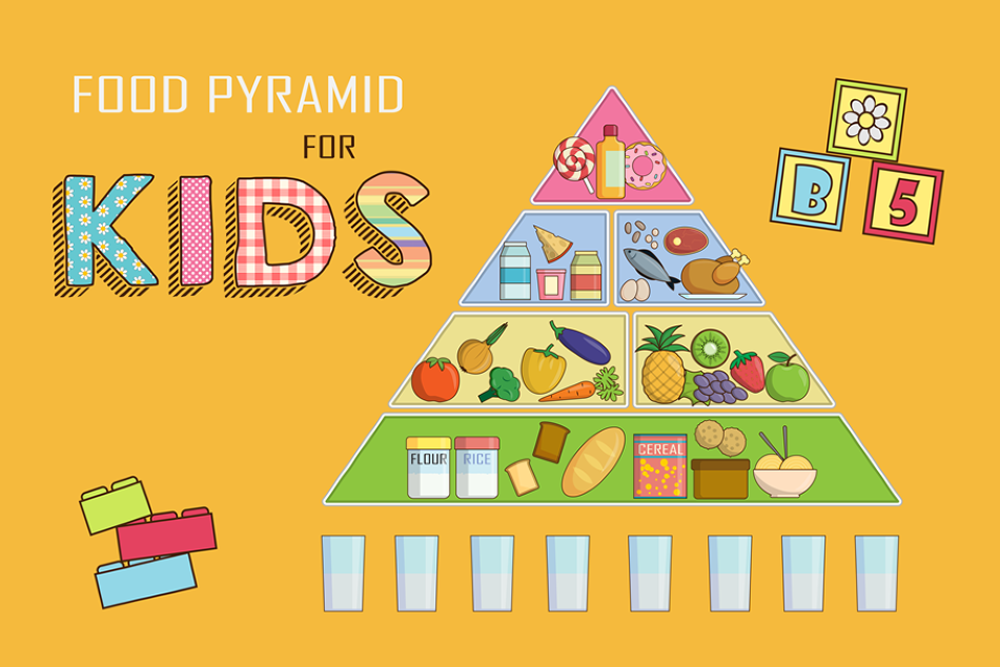National Nutrition Week 15-21 October 2017
Published on Tuesday, 17 October 2017
Last updated on Thursday, 21 January 2021

This week (15-21 October) Is Nutrition Australia's National Nutrition Week an annual campaign to increase awareness around the importance of healthy eating. With beginnings, more than 20 years ago, Australia's National Nutrition Week coincides with the United Nations' World Food Day, which takes place on 16 October.
The theme for National Nutrition Week this year is Try for 5 and the goal is to encourage all Aussies to increase their vegetable consumption to the recommended number of five serves per day.
2016 figures from the ABS show that most Australians are failing to meet the recommended serves for vegetables, fruit, dairy products and lean meats and ABS Director of Health, Louise Gates said that adults and children over eight consumed an average of 2.7 serves of vegetables, rather than the five serves recommended by the Australian Dietary Guidelines.
"Less than 4 per cent of the population consumed enough vegetables and legumes or beans each day," said Ms Gates.
Worse still, the ABS estimates that less than 1 per cent of children under eight usually met their recommended number of serves.
With childhood obesity rates up around 25 per cent, one of the driving goals of Nutrition Week is to combat this worrying trend by boosting awareness and acceptance of the importance of eating more fruit and vegetables.
Nutritionist Lucinda Hancock says vegetables are the food group we eat the least of, yet the one we should eat from the most.
"Whether they're fresh, frozen or canned, eating a rainbow of vegetables every day is one of the easiest things we can do to improve our health and wellbeing. Vegetables are full of vitamins, minerals, fibre and antioxidants which all help keep our minds and bodies working day-to-day, and reduce our risk of chronic disease in the future," she said.
Early childhood providers are in a pole position for supporting children to develop a broad palate and even fussy eaters may be interested in trying something new or unfamiliar if they see their peers doing the same.
Nutrition Australia offers these five quick tips for early childhood education and care providers trying to manage and encourage fussy eaters.
1. Grate Some Veggies
Veggies like carrots and zucchini are easy to grate and add into dishes such as rissoles, bolognese, casseroles, savoury slices or muffins.
2. Swap Meat with Lentils
Swap half of the meat in a recipe to brown lentils. The taste and texture will be similar, with more protien and fibre! Dried lentils will be tender after cooking for about 25-30 minutes or you might opt for the canned variety.
3. Get Children Involved and Familiar
Involve children in cooking and familiarise them with how vegetables look, smell, feel and taste. Older children could also help with chopping and grating vegetables. The more they are familiar with vegetables, the more likely they are to try something new.
4. Blend Vegetables
Blending vegetables and adding them into soups and sauces increases the flavour. It is also a short-term solution to increasing a fussy eater's vegetable intake.
5. Experiment
Use different colours, textures, tastes and presentation. The more variety there is the more likely a child will find something they are interested in eating. Serve different vegetable options at each meal and allow children to serve themselves and choose what vegetables they try and eat.
Related Articles

Nutrition and children in child care
Nutrition is an important factor when choosing an early childhood service, this article offers suggestions on what to look out for.

Reduce your food waste
FeedAustralia's online meal planning resource assists early childhood education and care providers design healthier menus.

Food for thought - Obesity rates amongst young children
Reducing sugar intake among preschool-aged children to curb childhood obesity.

